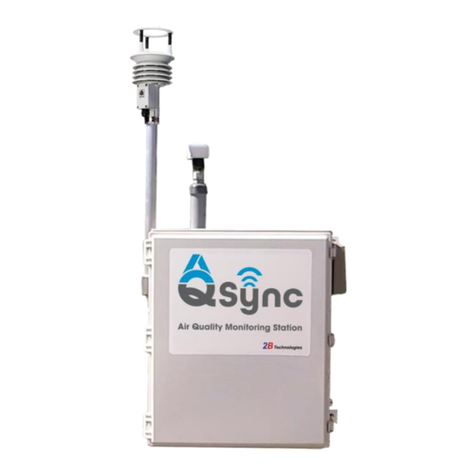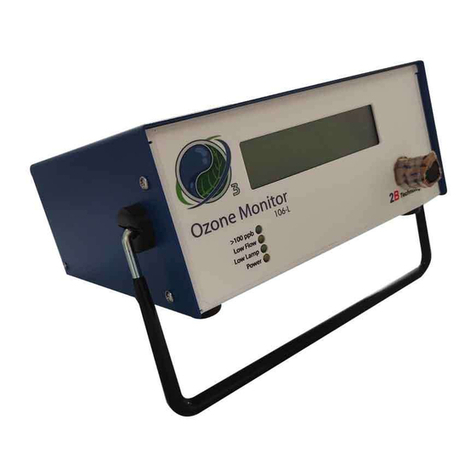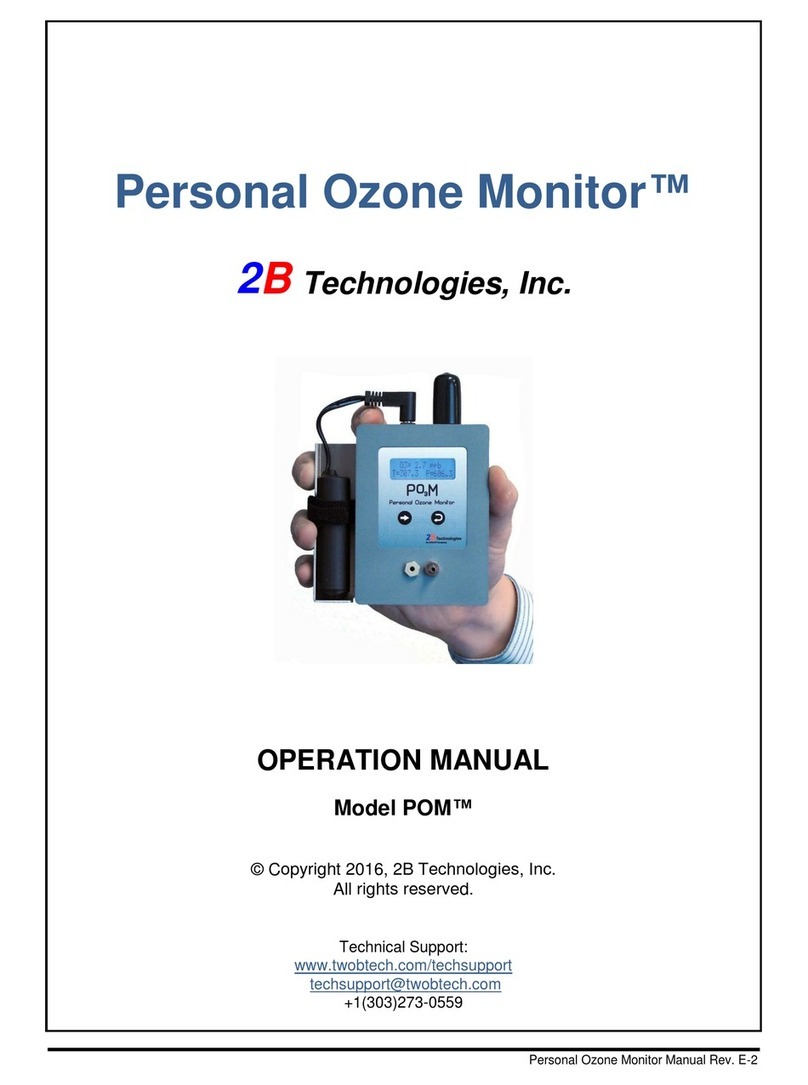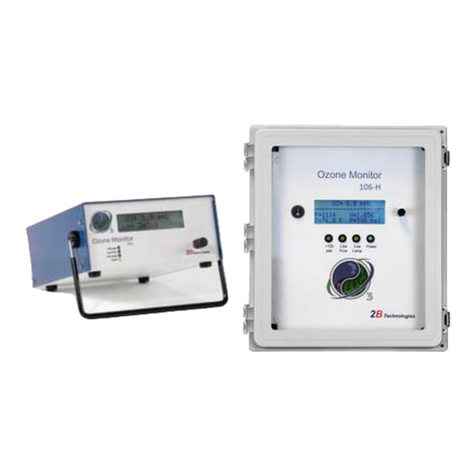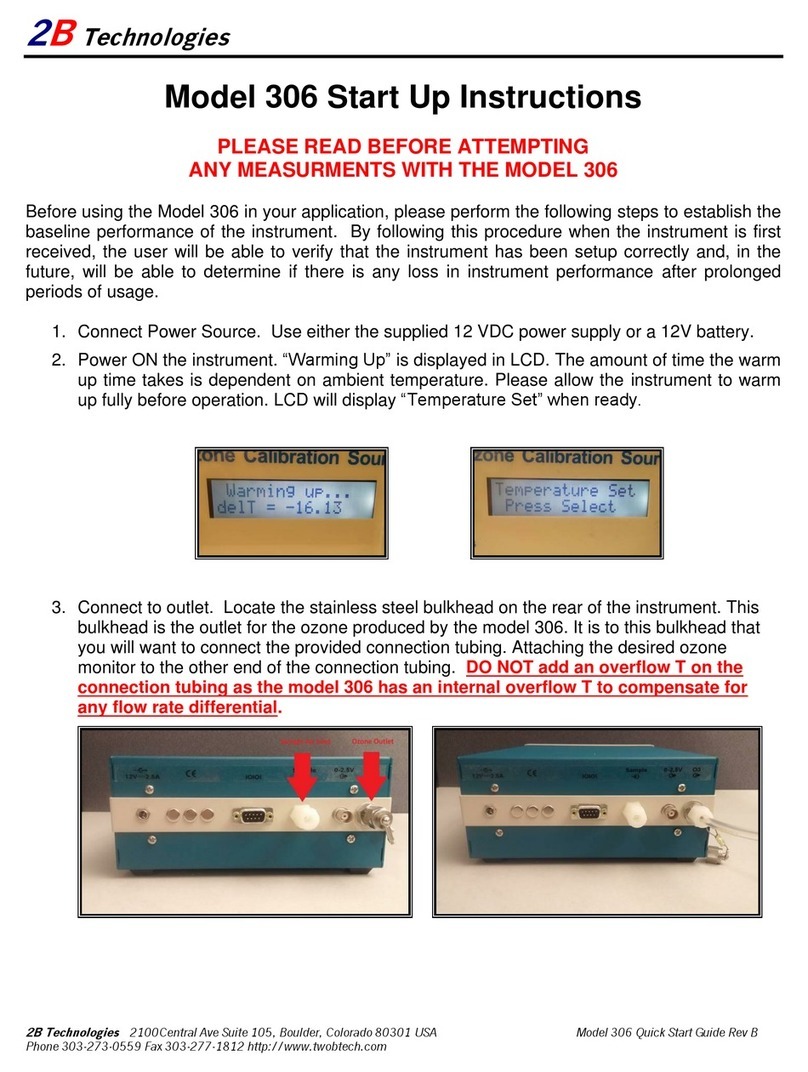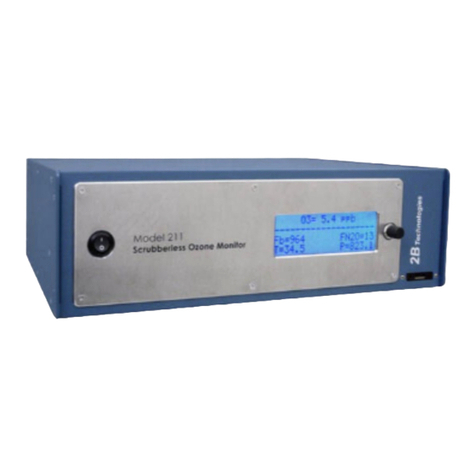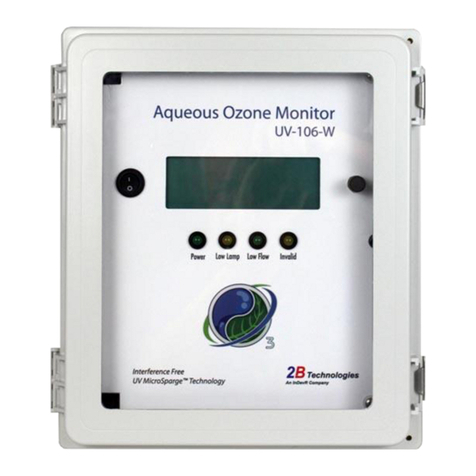Model 405 nm NO2/NO/NOxMonitor Manual Rev. D
ii
Contents
IDENTIFICATION RECORDS iv
PRINTING HISTORY v
WARRANTY STATEMENT vi
WARNINGS viii
1. NO2/NO/NOXMONITOR INTRODUCTION 1
1.1. Theory of Operation................................................................................................................. 2
1.2. Adaptive Filter.......................................................................................................................... 4
2. NO2/NO/NOXMONITOR SPECIFICATIONS 5
3. OPERATION 6
3.1. Shipping Box Contents............................................................................................................ 6
3.2. Pre-Operation Flow Settings of the Monitor............................................................................ 6
3.3. Operation of the Monitor.......................................................................................................... 7
3.4. Connections and Setup ........................................................................................................... 7
3.5. Measurement of the Zero Offset; Auto Zero Function............................................................. 8
3.6. Collecting Data from the Analog Output.................................................................................. 8
3.7. Collecting Data over the Serial Port in Real Time................................................................... 8
3.8. Data Averaging and Data Logging ........................................................................................10
3.9. Summary of Operating Recommendations ...........................................................................10
4. THE MENU 11
4.1. Menu Tree .............................................................................................................................12
4.2. To Start Logging Data ...........................................................................................................13
4.3. To Stop Logging Data............................................................................................................ 14
4.4. To Transmit Logged Data......................................................................................................15
4.5. To Average Data....................................................................................................................15
4.6. Instrument Configuration .......................................................................................................16
4.7. To Set the Time and Date .....................................................................................................16
4.8 Calibration Parameters - Overview........................................................................................16
4.9. To Set the NO2and NO Calibration Parameters................................................................... 17
4.10. To Set the Flow Meter Slopes............................................................................................... 18
4.11. To Change the Output Baud Rate.........................................................................................18
4.12. To Change the Analog Output Scaling Factor....................................................................... 19
4.13.To Read the Number of Hours of Monitor Use...................................................................... 19
4.14. Measurement Units ...............................................................................................................19
4.14.1.. To Change the Units for Internal Cell Temperature and Pressure ..........................19
4.14.2.. To Change the Units for NO2and NO...................................................................... 20
4.15. To Test the LED Voltage and Precision ................................................................................20
4.16. Measurement Modes............................................................................................................. 20
4.16.1.. NO2Mode................................................................................................................. 21
4.16.2.. NO2and NO Mode ................................................................................................... 21
4.16.3.. NO Mode..................................................................................................................21
4.17. Auto Zeroing.......................................................................................................................... 21
4.17.1.. Zero Duration ........................................................................................................... 21
4.17.2.. Zero Frequency........................................................................................................21
5. REMOTE CONTROL VIA SERIAL CONNECTION 22
